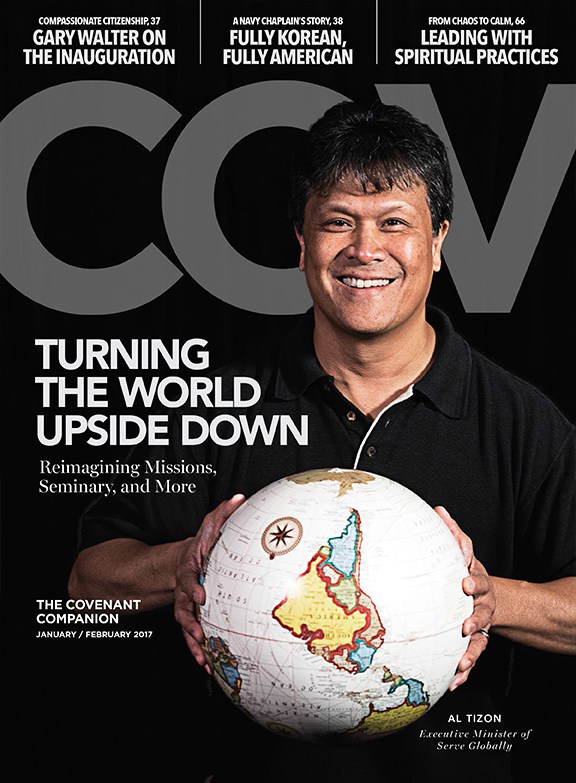
Recently 1,300 Covenanters gathered for our annual clergy conference known as Midwinter, where I presented a Covenant update. (You can view it here) One topic I talked about from my heart was Covenant cohesion.
I’m confident that our mission is going to remain strong. We have good leaders in a new streamlined structure, who are committed to serving our churches and uniting our churches in service together.
But Covenant strength is not just the strength of our mission, it is also the strength of our interconnectedness. It is, after all, the very character our name seeks to capture. My heart yearns around the importance of Covenant connectivity.
One factor is the impact of our growth and what that means for relationships. Consider a church with 90 people that grows to 230. You don’t know everyone anymore, someone might be sitting in your usual spot, and you are not in on every discussion or every decision anymore. It is still not a large church, but the relational dynamic is decidedly different.
Now apply that to the Covenant by adding three zeroes—90,000 to 230,000. That is the growth that has taken place in the ECC over the past twenty-three years.
Relationships are still a huge part of our character— but they aren’t inevitable.
Something decisive happened in 1992. ECC president Paul Larsen and then chair of the council of superintendents Glenn Palmberg (who would become Paul’s successor) led a recommitment to this mission field and its diversity. Through prayer and hard work, but mainly through God’s mercy and goodness, this little denomination started chugging forward. We’re still chugging.
But what happened relationally? At 90,000, if you were a minister, you personally knew church leaders. You knew or had heard of every one of your credentialed colleagues. You knew the name of every missionary.
If you were a layperson, you enjoyed the Covenant “three degrees of separation.” You could start a conversation and within minutes find a common friend or pastor or church, and at least a camp or North Park memory to share.
That came naturally because our size allowed it. And it generated a stickiness and cohesion that was important in times of stress.
At 230,000, denominational dynamics shift, just as they do in a growing congregation. Are we a large denomination? No. If denominations were the Westminster Kennel Show, we would have only grown from the chihuahua class to the terrier class. We’re still not a big dog, and probably never will be, nor is that our aim. But relational patterns change with growth. Relationships are still a huge part of our character—but they are not as inevitable, not as virtually guaranteed as they once were. Deep connection and cohesion is attainable and we all desire it, but it’s not the certainty it once might have been.
The implication is that when some of that previously predictable stickiness is not as easily produced, when stress comes it can be easier to pull away from each other because the relational glue might not be as bonded.
My challenge is this: Let us each ask, what am I contributing to the relational glue of the ECC? How can I more deeply engage, get to know, and support others?
Let us practice the discipline of connection. There are many opportunities. Your conference annual meeting and Gather ’16 (which includes the Covenant Annual Meeting) are both right around the corner. But also find your own way to build deep spiritual friendships in your congregation and beyond.
This is who we are at our best—with the mission going forward and relationships growing deeper. In that simple rhythm, this little corner of the kingdom will keep chugging along in fruitfulness and friendship—strengthened through the very character our name Covenant seeks to capture.

Comments